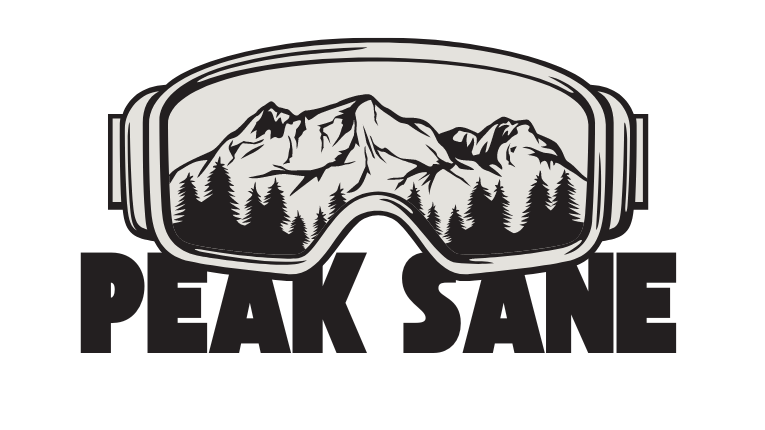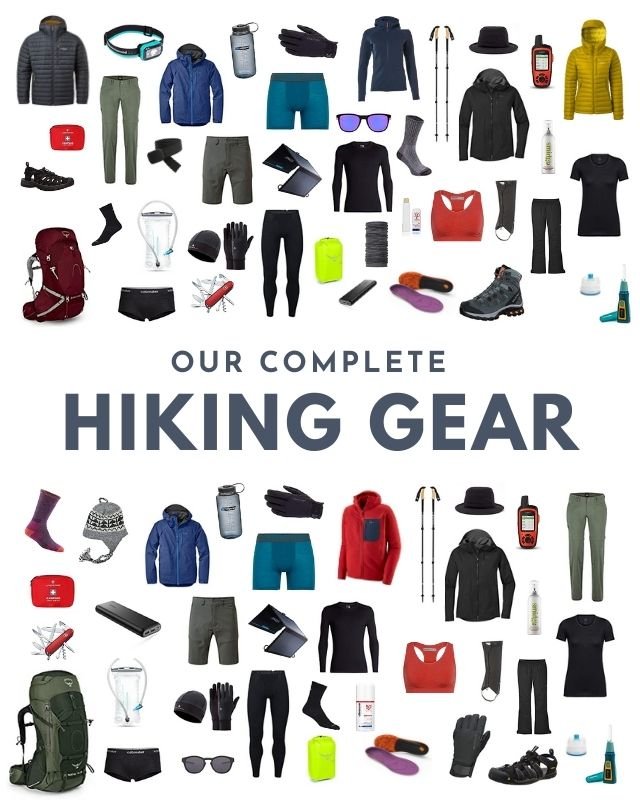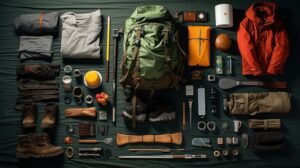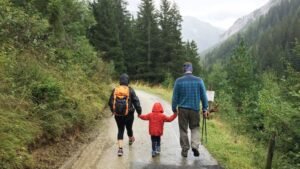A Seasonal Guide to Hiking Wardrobe essentials
Experiencing all seasons of hiking brings different rewards and challenges. Every season comes with certain climate conditions, temperature swings, and other environmental factors that will either benefit or be a burden to your hiking adventure. Hiking in fall will give you the blues, and winter hiking is ter-rible without some critical gear to stay safe, warm and comfortable. Having spent the last 20 years hiking, this enormous guide offers you everything that you need to know about what to wear hiking in all seasons and provides detailed advice and suggested gear on how to get the most of your time outdoors.
Hiking Apparel Guide
1. The Principle of Layering
Layering is a basic idea behind hiking apparel that requires you to wear layers of clothing to regulate body temperature, and adjust easily when the weather takes a turn for the worse. There are three primary elements to effective layering:
Base Layer — closest to your skin, made to wick moisture and keep you at a balanced temperature. Crucial to Keep You Dry and Comfortable
Middle Layer: Offers insulation and traps body heat. It is also nice when the layer has some warmth but not too much and breathes.
Outer Layer (Shell): The outer layer for wind, rain and snow protection. That said, it needs to be both waterproof and windproof, as well as breathable to create proper air flow to prevent you from overheating.
2. Material Matters
Going for the proper materials in every layer is important both comfort and performance wise:
THE NEXT-TO-SKIN LAYER: Choose moisture-wicking material such as merino wool or polyester, meaning that it will dry quickly and move the sweat from your skin to the next layers.
The Middle Layer: Fleece, down, and synthetic insulation provide varying degrees of warmth and breathability. While fleece provides insulation in moderate weather, down yields optimal cold-weather warmth.
Outer Casing: Opt for waterproof, breathable materials such as Gore-Tex or similar membranes to keep water and wind out while letting sweat escape.
Transitioning Into The Spring With New Hiking Gear
Fluctuating temperatures, increased rainfall and the growth of flora are all indicators that we have entered spring — a season synonymous with transition. When dressing for spring hikes, you need to find a balance in wearing lightweight yet versatile clothing.
1. Base Layer
Spring can be volatile, so select a lightweight moisture-wicking base layer. Opt for long-sleeve tees and lightweight tops that can easily transition depending upon where you are throughout the day.
Recommended Options:
Material: Merino wool + Synthetics
Specialty: Lightweight, Breathable & Moisture wicking.
The Key Point: A good base layer controls sweat and helps keep you feeling right no matter what the temp.
2. Mid Layer
Boots and Shoes for SpringA lightweight fleece, or even a softshell jacket are great for spring. They give you warmth on cool mornings and evenings, but are breathable all day.
Recommended Options:
Fabric: Light Fleece WITH Softshell outer.
PROs: Lightweight, comfortable, breathable and quick drying CONs: None
Why It Matters: A middle layer should be flexible, temping you on a relatively cool day to leave off the liner while still providing enough insulation so that no matter how warm it gets, your can remain comfortable.
3. Outer Layer
A waterproof and windproof jacket is a must have for spring hikes, as you will encounter rain showers on almost every hike. Pack fully unzipped, into its pocket and you have yourself a perfect little pillow.
Recommended Options:
WHAT IT IS: Waterproof, breathable fabric like Gore-Tex or equivalent.
Tech: Packability, weather resistance, and adjustable hoods/cuffs
Why It Matters: Keeps you dry and comfortable in wet, windy conditions.
4. Footwear and Accessories
Footwear – select hiking boots or shoes that are waterproof and have a solid, gripping sole for wet and uneven surfaces.
Recommended Options:
Material: Waterproof leather or synthetic, with grippy soles.
Ultimately, for the following foot and ankle features are crucial the traction and ankle support with breathability comfort footwear. There are also the lightweight hat and gloves to wear, as it is cold in the morning and can be hot after the sunrise. Hat should be lightweight and moisture-wicking and gloves need to be thin, moisture-wicking for cooler days. Proper footwear and accessories make you comfortable and ready to face any weather conditions. Summer gear is about staying cool and protecting your body from high temperature and hot sunshine. Therefore, the base layer should be a lightweight moisture-wicking top and bottom that can help to dry your sweat and body heat to relax. There are also a mid-layer and outer layer for summer that is used mostly in the early mornings and, if necessary, when it is cold at the mountains. Mid layers are lightweight through summer, so additional comfort and protection should be noted for every hiker. Outer layers are critical equipment for any hiker during the summer due to its difference. It can be cold in the early morning and be stormy in the noon but sunny and hot at the evening. I recommend choosing materials that have ventilation holes and can be packed. And, of course, a jacket needs to be water-resistant. Footwear and accessories need to be breathable and light, as the day gets hotter.
Pros: Traction and breathability are splendid.
Accessories: Sun Protection is a MUST so Grab your wide-brimmed hat, sunglasses w added UV protection and 30+SPF sunscreen!
Recommended Options:
Hat: Broad brimmed and wickable.
Eyewear: UV protection with polarization.
Sunscreen: SPF 30 or higher.
Why It Matters: Keep yourself shaded from the sun and comfortable on hot trails.
Autumn Hiking Gear: How to Prepare for the Cold
Temperatures cool down, and the weather gets a bit more unpredictable in the autumn. Fall gear needs to be warm but not too hot or heavy, and it should keep you dry when leaves are scattered by the wind or rainfalls unexpectedly.
1. Base Layer
A not-too-heavy base layer that provides some warmth and ensures you stay dry during those fall hikes. Pack long sleeve shirts or thermal tops to keep you warm.
Recommended Options:
Fabric: Merino wool or synthetic-midweight.
Benefits: Warm, Moisture Wicker and Quick Dry
Why That Matters: So you can stay warm and dry when out on a cool autumn hike.
2. Mid Layer
In autumn, use a mid layer such as a thicker fleece or perhaps on colder days, even an ultralight down jacket. These layers are thermal whilst being breathable, making them perfect for when the temperature changes.
Recommended Options:
Material: More thick fleece or Down.
Details: Insulated / Breathable fabric / Packing down small
Why It Matters: Provides warmth on chilly mornings and evening, but won’t cause over heating during the run.
3. Outer Layer
It can be precarious this time of year with the brutal guise that is fall weather, a good water and wind blocking jacket will keep you nice and dry and shielded from the gales. Find a jacket with good vents and a hood that cinches.
Recommended Options:
Fabric: Waterproof breathable.
Venting, adjustable hood, weather resistance.
WHY IT MATTERS: Keeps out rain and wind while still breathing.
4. Footwear and Accessories
Footwear: Waterproof hiking boots are strongly encouraged for the fall as trails can be muddy or wet.
Recommended Options:
Material: Waterproof leather or rainer-proof synthetic.
Specifications: Toe box insulation + good traction and water resistance
Accessories- Gloves, beanie and a neck gaiter to add extra warmth during the cooler days.
Recommended Options:
Gloves — light insulation
Hat: Warm, moisture-wicking.
Neck Gaiter: To Keep You Warm, Adjustable
Why It Matters: Keeps you warm and cozy as the mercury plummets.
Winter Hiking Gear: Conquering the Cold![21024-0001]
Significantly more challenging is winter hiking, as the temperatures are cold and there is snow/ice. Which means that gear has to be really warm, water and wind protect you much of the day, and it needs to function while doing so.
1. Base Layer
Before the weather gets too cold, invest in a thermal base layer which provides insulation and includes moisture wicking materials. Opt for long-sleeve thermal tops and bottoms that wick away your body heat.
Recommended Options:
Fabric: Thermolane merino wool or a synthetic fabric.
Insulation:m Isolation: Isolating Wicking Moisture wicking Quick drying Dry Moist
Why That Matters: Will keep you toasty and dry in the worst cold.prepareStatement
2. Mid Layer
Graeme’s defense: A good, thick mid layer (fleece or down jacket) will almost hold the heat in on its own in cold weather. You can try wearing two mid layers over one another for better insulation too.
Recommended Options:
Construction: Heavy fleece or down
Insulation Properties: High Insulation, Warmth and Breathability
Why It Matters: Provide critical insulation and warmth in freezing weather.
3. Outer Layer
Winter hike in last year, wearing my G3 and search and rescue parka a good insulated waterproof outer layer is important! Features: A snow skirt helps to keep out snow, and great weather protection is key, as well as insulation in the right places.
Recommended Options:
Materials: Insulated, waterproof fabric (type Gore-Tex).
Key features: Insulation, weather-resistance, and possibly other more niche-oriented attributes like a powder skirt or adjustable cuffs.
Why It Is Important: Should shield you from snow, wind and rain while keeping you warm.
4. Footwear and Accessories
Shoes: Insulated and waterproof with significant traction.
Winter hiking spikes are a must. Moreover, you may even think about snowshoes as well as crampons for slippery situations.
Recommended Options:
Materials: Waterproof leather or synthetic with insulation.
Pros: Excellent traction, insulation, very well waterproofped.
Warm gloves; Hat or balaclava; Gaiters (to keep snow from getting into your boots) If the trail is icy, consider bringing snowshoes or crampons.
Recommended Options:
Gloves insulated, Waterproof.
Hat/Balaclava – To keep you warm and shield you from the wind.
Gaiters – Waterproof and adjustable
Snowshoes/Crampons – improves grip in snow and ice.
Why This Matters: Because people are less likely to freeze to death in a Polar Vortex.)
Unique As Gear and Concerns
1. Layering System
Learning to layer properly is essential for maintaining comfort while efficiently regulating your body heat throughout fluctuating conditions. Wicking base layer, insulating layers, and a weatherproof shell. Layer appropriately for the event, and check out my tips on how to wear every layer just right!
Layering Tips:
Base layer: moisture wicking (long) — so you can stop reading half way if you have thougt otherwise.
Insulation Layer- Layer with a fleece jacket, adding or removing as required.
Shell Layer: A weatherproof covering to fend off rain, snow and sun.
2. Fit and Comfort
Is it important for a working boot to fit you right? Make sure that each layer also allows for a lot of movement. The gear should fit close against the body but not be so tight that you cannot layer it or get any venting.
Fit Tips:
Testing how layers all work together for fit and mobility.
Mobility – This goes hand-in-hand with the above, always make sure that you can move your body fully through its ranges ( where safely possible), no restriction in movement.
3. Weather-Appropriate Gear
Pack adaptable clothing and be ready for unpredictable weather. A good example would be a light rain jacket (something you can pack up in your bag and is designed for staying dry), or also some extra layers.
Weather Tips:
Choose Versatile Gear (Also Good In changing Weather)
Stay abreast: Make it a point to look at weather updates before as well as after your hike so you can dress accordingly.
4. Likes and Dislikes
When you get hiking gear most consider your own personal style and needs in a hike. Specific factors include the regulation of body temperature, activity level, and subjective comfort tendencies.
Personalization Tips:
Understand What You Need: Know what works best for your body and the way you hike.
Test Gear: Another way of performing is to try out different items for doing the job.
Conclusion
One of the most important aspects to hiking in varying seasons is ensuring you are dressed appropriately. Keeping comfortable, safe and enjoying your hike depends on it! Knowing the basics of layers and how they work, choosing suitable materials, and being ready for seasonal conditions will set you up to hike anytime without complication. And no matter how hot and sweaty or cold and freezing you happen to be, your hiking can experience will be all the better if you outfit yourself with the right gear.
So transfer this journey and put together by following these gear suggestions. But with the proper attire and gear, you can take full advantage of every season to enjoy the great outdoors in relative comfort and safety. I wish you happy hiking and all the amazing times, as well as breathtaking views on your hikes in all 365 days of the year!




